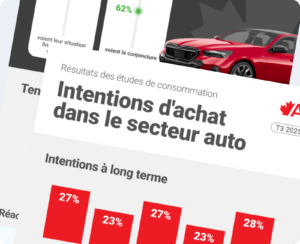Articles de la salle de presse
Originally published to trffk.ca
If the saying ‘necessity is the mother of invention’ is anything to go by, current challenging times definitely call for some innovative steps and out-of-the-box digital marketing strategies. If you’re a car dealer looking for answers on how best to leverage digital platforms during these challenging times that no industry has never seen before, read on some of the best practices that Ray Gill – Senior Sales Manager, TRFFK – outlines in this tête-à-tête with Sparsh Sharma.
SS: Given that people are working from home and likely still browsing inventory or researching for their next vehicle purchase, what is the topmost digital strategy dealers can focus on during these times of uncertainty?
RG: Firstly, no matter how tempted a dealer may be to cut down on their marketing spend, it’s not an approach we recommend as it’s important to maintain some exposure for your inventory. The AutoTrader.ca marketplace, for example, is still seeing millions of users browsing and researching cars, which shows that the demand is out there, via the marketplace as it’s the most cost efficient source of getting VDP views, and other tactics such as paid search driving highly-engaged traffic to the dealer’s website.
Secondly, dealers need to focus on strong remarketing campaigns. According to research shared at Google’s Think Auto, a typical car buyer’s journey lasts over 60 days, and consumers may end up spending even more time researching online that they are staying indoors. We also expect browsing times on social media, especially Facebook and Instagram to go up.
It is, therefore, important to have a strong retargeting strategy in place to keep your inventory top of their minds. Retargeting ads can be focused on dealer or OEM offers, and TRFFK is able to remarket to users who have viewed your inventory on the AutoTrader.ca marketplace – a powerful combination.
SS: Those are some pertinent points. Can’t dealers also utilize their CRMs – the gold piles of precious data – towards these remarketing efforts?
RG: Yes, dealers must absolutely utilize their CRM to target in-market shoppers. The CRM data can easily be used to build audiences to target in our digital marketing campaigns. For example, both Google and Facebook have this functionality where we can upload a dealer’s audience list, and the platforms will match them to Google or Facebook accounts, and these people can be targeted with the right campaigns.
A great way to use these platforms’ customer match functionality is by building a list of past customers whose leases or financing are about to come to maturity. This is a definite moment when someone is likely to come back in-market to get a new vehicle, and these are the type of shoppers who are more likely to make a purchase during the Covid19 situation.
In order to target these users, you can use videos or banners that are highlighting any promotions or offers you have available at the dealership.
SS: Given the need to leverage digital platforms now more than ever before, what are some important steps in a buyer’s journey that dealers can move online with minimum effort?
RG: Dealers can use digital platforms to announce special promos or COVID-19 specific changes they have made at the dealership through ad copies and tastefully done videos or banners. For e.g. if they are offering test drives from home and have video chats available or have eCommerce enabled on their websites, rewriting ad copies to focus on to these elements is critical.
These can be unique points of differentiation that would make a shopper want to come to your dealership versus a dealership that hasn’t changed their sales process for COVID-19.
This should also be factored into their responses to leads. Instead of the focus on asking people to book a test drive and walk into the dealership, asking them to do a video chat or book a test drive from home or conveying how the dealership is taking precautions will work way more effectively than competitors who are still responding with “when can you come in for a test drive?” kind of responses.
SS: You mentioned an interesting topic for a lot of dealers lately: Videos. Can you elaborate on how they can best use this medium most effectively?
RG: Video is a great way to get your messaging out and show how your dealership is taking COVID-19 seriously and changing your sales process. Dealers need to start using videos to get such timely messaging out.
Video campaigns can be run on YouTube and Facebook, and with our audience targeting, can be focused only on users who have shown some interest in your inventory. One of the great benefits of video is a lot of the ad types are based on a cost-per-view model, so you actually don’t have to pay unless the user is fully engaged and watches the whole ad.
Anyone who skips isn’t actually charged to the campaign. This helps maximize your investment since you’re only paying for users who are interested in your messaging.
SS: Social and video are indeed fantastic channels to drive awareness in minds of your potential car buyers. What do you recommend a dealer to do with their strategy for search ads?
RG: Search continues to remain a priority in these times. However, the focus should be on inventory terms. Search is all about intent, and nothing is showing more intent for a new or used vehicle than someone using the model-specific search terms like “used Honda Civic for sale” for example.
Investing in inventory terms for your paid search strategy will help drive these high intent shoppers to your website where you can control the conversion process (unlike when they were to click on an OEM ad) and only show them your inventory.
If you’re deciding what type of campaigns to focus your paid search budget on during the COVID-19 crisis, our advice is to maximize your inventory search. We recommend cutting budget from your brand campaigns, as it is less likely competitors will be bidding on your terms, since they’ll be looking to reduce budget, and you’ll already have strong organic presence to bring that traffic to your website for free.
SS: Are there effective ways for dealers to help out car owners looking to sell in the immediate future?
RG: Absolutely, dealers can run ‘guaranteed trade’ campaigns to help people who are unfortunately in a situation where they need to have more liquidity, and are looking to get rid of their vehicle. If a dealer is using a guaranteed trade product like AutoTrader.ca’s Instant Cash Offer (ICO), you have the ability to provide customers with a guaranteed trade value that they can receive a cheque for, without actually purchasing a vehicle. This is a great way to provide a service to consumers who are in a tough spot and can also help you acquire high quality used inventory that you can turn when the market does pick back up.
The great thing with ICO is, if you don’t want to keep the inventory, you can just wholesale it without incurring any costs. This gives you a great opportunity to provide value to challenged consumers and start showing them the great service your dealership provides. This is what will help your dealership get more sales when the market recovers.
Another opportunity is digital retailing; being able to complete a transaction completely online. It’s something which has been making inroads into our industry in recent years and I expect the current situation to really accelerate this further. TRADER has invested in Motoinsight, a company that offers this service.
SS: Any other tips in the context of marketing communications between dealers and their clients?
RG: It is essential to not appear opportunistic during the COVID-19 crisis. This is an unprecedented situation for pretty much all of us, and there is a lot of uncertainty for how the next few months will turn out.
With that said, please ensure your campaigns reflect how potential car buyers can book virtual appointments as the in-store sales activities take a pause. Also ensure you aren’t running any sort of private sale events or offering customers free air trips.
Dealerships have an essential part to play, and you still have staff you need to pay and support, so it is 100% acceptable to still run campaigns, just work with your vendors to ensure they are tasteful.
– Sparsh Sharma – Digital Strategist Manager, TRFFK









